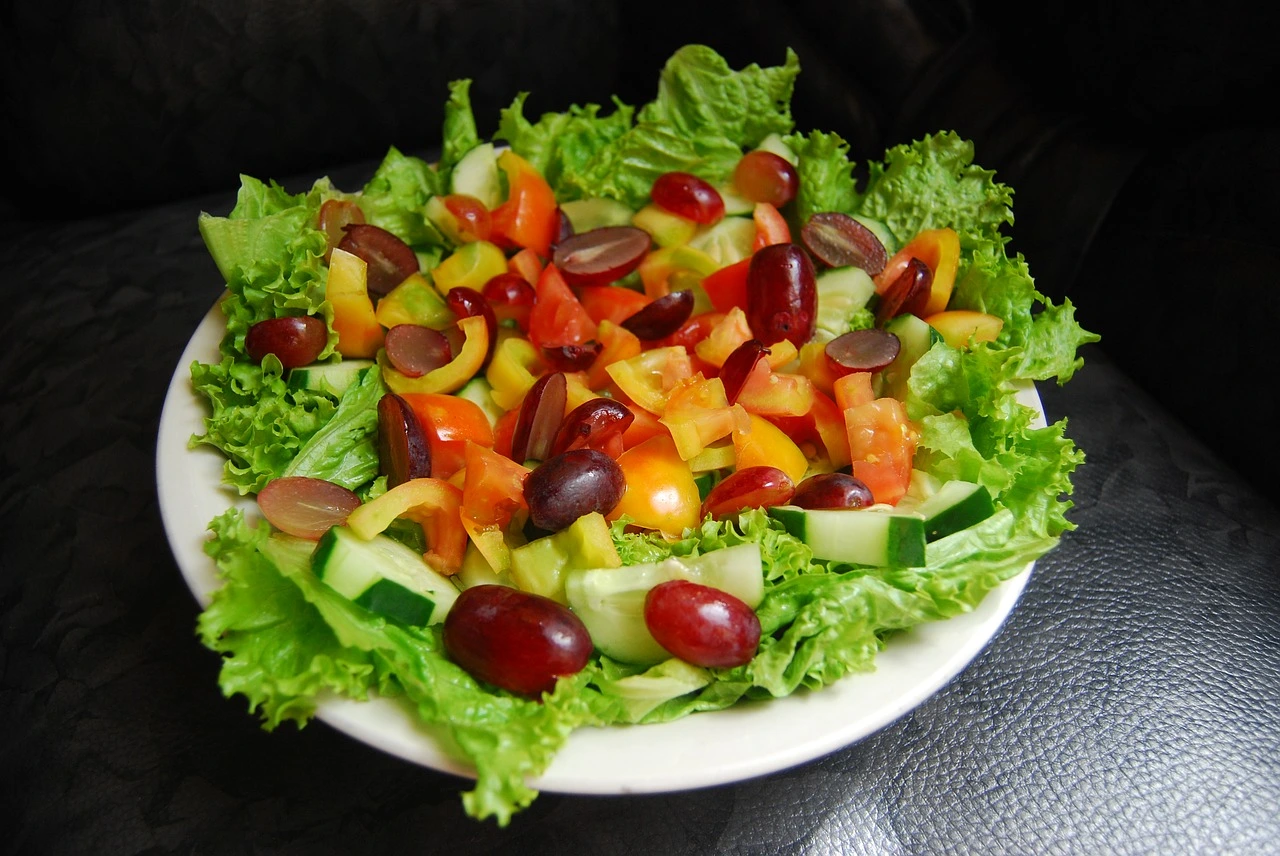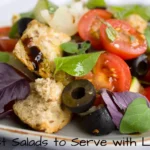Salads are a great way to incorporate essential fruits, vegetables, and fiber into your diet. Whether you’re looking for a refreshing and light meal or a satisfying side dish, salads are a perfect option. With a variety of ingredients to choose from, it’s easy to create a healthy and nutrient-rich salad. Follow this guide to help you make the perfect nutritious salad.
To make your salad even more nutritious, add some healthy extras. Some ideas include:
- Chia seeds
- Flax seeds
- Dried cranberries
- Chopped nuts
- Seeds
- Chopped herbs
Here’s a guide on making a nutritious salad
Incorporating different colors into your salad can enhance its appearance and provide a diverse array of nutrients.
Choose fresh, seasonal ingredients. This will help your salad taste its best.
Balance your ingredients. Don’t overload your salad with one type of ingredient. Aim for a variety of colors, textures, and flavors.
Dress your salad lightly. A little dressing goes a long way.
Enjoy your salad! Salads are a delicious and healthy way to get your daily nutrients. So next time you’re looking for a meal or snack, reach for a salad.
When it comes to dressing, opt for a light and healthy option. A simple vinaigrette made with olive oil, vinegar, and herbs is a great choice. You can also use yogurt-based dressings or tahini dressing.
Here is one of the recipes for a healthy salad with full nutrition information:
Ingredients
- 1 head romaine lettuce, chopped
- 1/2 cup chopped red onion
- 1/2 cup chopped cucumber
- 1/2 cup chopped carrot
- 1/2 cup chopped tomato
- 1/4 cup chopped avocado
- 1/4 cup chopped nuts (such as almonds, walnuts, or pecans)
- 1/4 cup dried cranberries
- 1/4 cup crumbled feta cheese
Dressing
- 1/4 cup olive oil
- 1 tablespoon balsamic vinegar
- 1 teaspoon Dijon mustard
- 1/4 teaspoon salt
- 1/8 teaspoon black pepper
Instructions
In a large bowl, combine the romaine lettuce, red onion, cucumber, carrot, tomato, avocado, nuts, cranberries, and feta cheese.
In a small bowl, whisk together the olive oil, balsamic vinegar, Dijon mustard, salt, and pepper.
Pour the dressing over the salad and toss to coat.
Serve immediately or store in the refrigerator for later.
Nutrition Information
One serving of this salad (about 1 cup) provides the following nutrients:
- Calories: 260
- Protein: 9 grams
- Carbohydrates: 25 grams
- Fiber: 6 grams
- Fat: 14 grams
- Saturated fat: 2 grams
- Cholesterol: 10 milligrams
- Sodium: 200 milligrams
- Potassium: 440 milligrams
- Vitamin A: 100% of the Daily Value
- Vitamin C: 30% of the Daily Value
- Calcium: 15% of the Daily Value
- Iron: 6% of the Daily Value
This salad is a healthy and delicious way to get your daily dose of fruits, vegetables, and fiber. It is also a good source of protein, healthy fats, and vitamins and minerals.

Here are some additional tips for making a healthy salad:
To make a healthy salad, start with a base of leafy greens. You can use your favorite type of lettuce, spinach, or arugula. Then, add various vegetables, such as tomatoes, cucumbers, carrots, peppers, and onions. For extra protein, add some grilled chicken, tofu, or chickpeas. And for some healthy fats, sprinkle on some nuts, seeds, or avocado.
Use whole grains instead of refined grains. Whole grains are a good source of fiber, which can help you feel full and satisfied.
Choose lean protein sources. Lean protein sources, such as chicken, fish, and tofu, are a good way to add protein to your salad without adding too much fat.
Limit your intake of unhealthy fats. Healthy fats, such as olive oil, avocado, and nuts, can be a part of a healthy diet, but it’s important to limit your intake of unhealthy fats, such as saturated and trans fats.
Avoid added sugar. Salads should be naturally sweet from the fruits and vegetables you add. Avoid adding added sugar to your salad.
Drink plenty of water. Eating a healthy salad is a great way to stay hydrated, but it’s important to drink plenty of water throughout the day.
See Also: https://simplerecipesandcookingtips.com/can-you-lose-weight-by-eating-spaghetti/
Q&A
Q: What are some healthy salad dressings?
A: Some healthy salad dressings include vinaigrettes made with olive oil and vinegar, yogurt-based dressings, and lemon-based dressings. Avoid dressings with high amounts of added sugars and unhealthy fats.
Q: How can I make my salads more filling?
A: Adding protein such as grilled chicken, tofu, or hard-boiled eggs can make a salad more filling. Also, adding healthy fats like avocado or nuts can help keep you feeling fuller for longer.
Q: What vegetables are best for salads?
A: Any vegetable can be used in a salad, but some popular choices include leafy greens like spinach and kale, cucumbers, tomatoes, bell peppers, and carrots. It’s important to choose vegetables that you enjoy and that provide a variety of textures and flavors.
Q: Can salads be unhealthy?
A: Yes, salads can be unhealthy if they are loaded with high-fat dressings, croutons, cheese, and other unhealthy toppings. It’s important to choose healthy toppings and dressings and to watch portion sizes.




